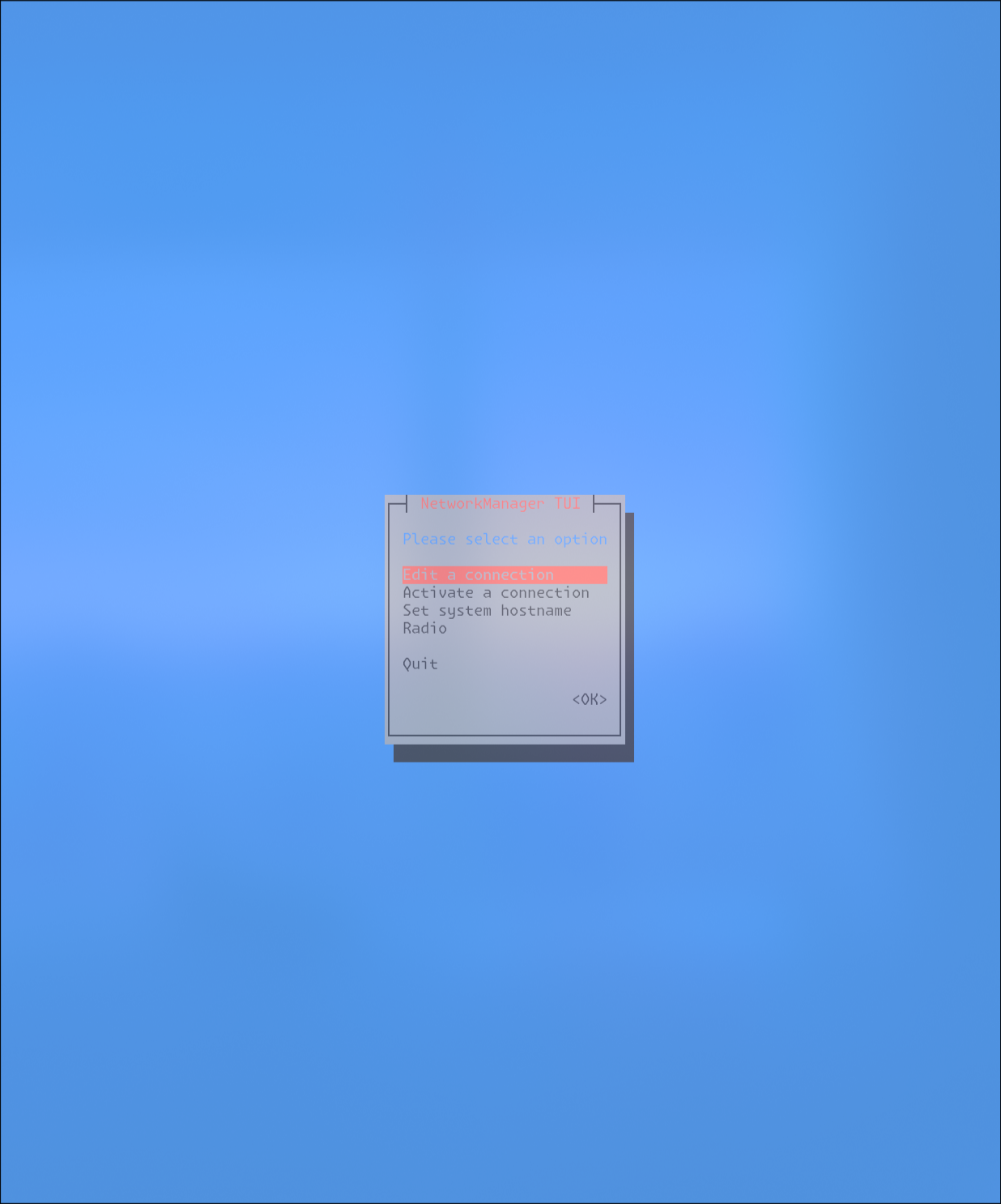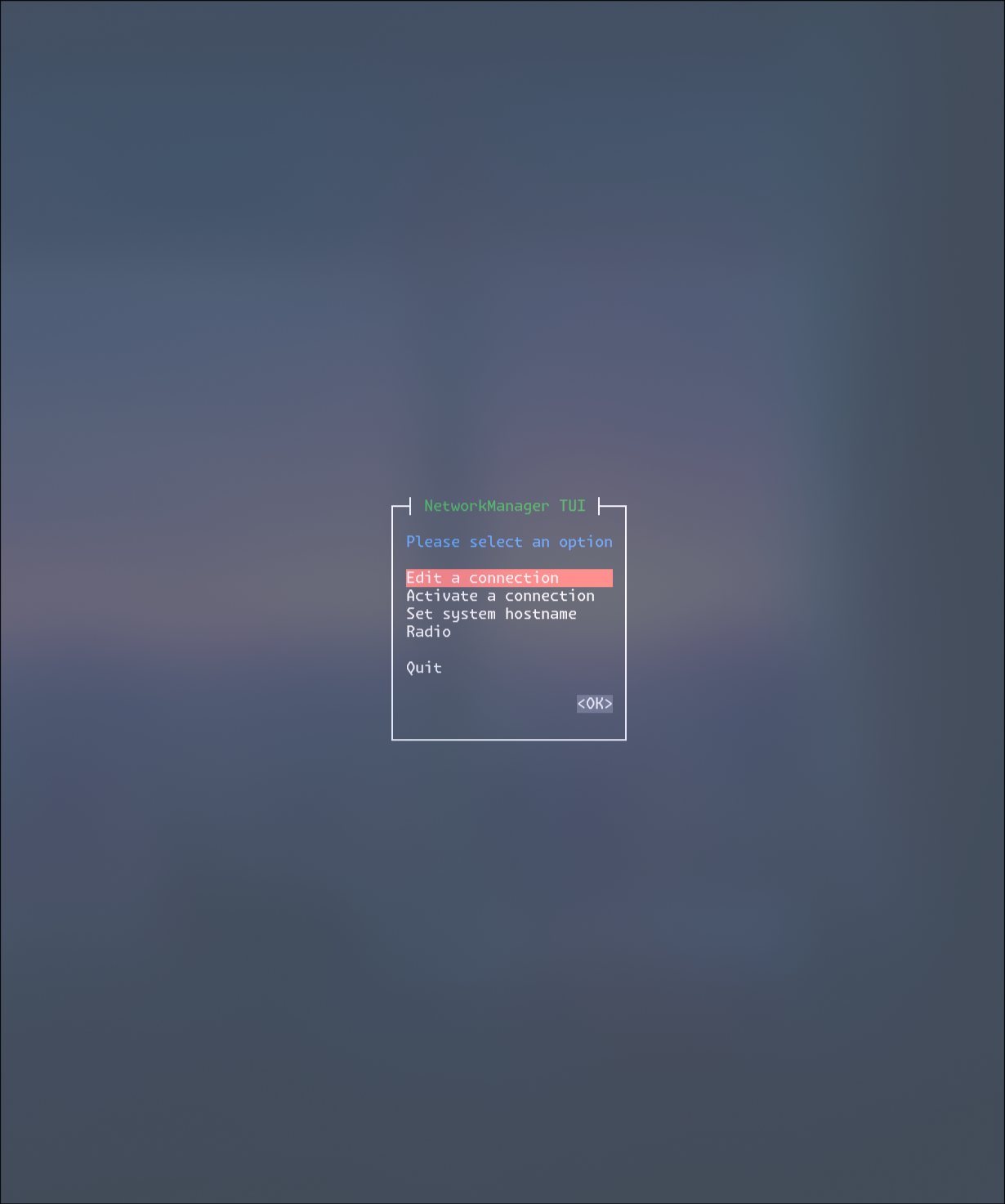Guys, guys... You're over-ideologizing a very simple humane request. I was asked nicely and respectfully -- I tried to respond in the same way. Simple as that. I'm usually not regulating my personal communications with others in terms of laws and amendments.
hayk
same here (except it's waybar in my case) ( :
i really apologize if the use of that word was perceived as offensive, that was obviously not my intent. i'm usually quite straightforward in picking words (i come from a completely different culture, where sexual assaults are extremely uncommon).
PS. for the context of others reading this comment, the original title of this post was: "nmtui that does not rape your eyes."
for comparison, here's the default

What do you actually use as a VM backend? VirtualBox limits the VRam you can allocate, and other options (vmware) I’m not even sure work with linux.
In the old days laptops were rare and accessible only to selected few. The others in the background were just admiring the flawless handwork the arch user is displaying with the command line.
from someone's ... posterior? ... latter end? ... tuchus? arse is a bit more descriptive, eh?
How much do you think I earn to afford paying for Office or Adobe? :) i’ve never paid for any of those, even though I’ve been using Adobe since CS5.
As for donating: i agree, for now i sometimes help in contributing to the codebase in a bit smaller apps i actually can fix things in.
I used WPS, it was worse than Libre from the usability, plus quite bloated with all sorts of stuff (luckily, I don’t have to pay for the Office, and will never actually do that willingly). Haven’t used the other two, however, will have a look, thanks!
Both GIMP and Krita are very nice and decent, just not powerful enough for many things I need photoshop for. Inkscape is actually much closer to Illustrator (not as powerful, but still), so that might be the only one with the “getting used to it” issue.
Actually, one other thing I should have mentioned, is that I also transited from using Premiere Pro to Kdenlive (and sometimes even Blender for very light video editing). Kdenlive is an amazing success story for KDE, hope that happens to Krita as well.
PS. The name GIMP sounds amazing! Love it, they should never change it )
This has been some time ago. Because of the apps I mentioned I had to transit after a week of usage. But in that week, it was kinda nice. I don’t think from the upkeep standpoint it’s too different from other distros. Like I said, the main hard-to-overcome issues come from hardware support, often due to vendors unwilling to release drivers for Linux. But most of the major vendors (intel, amd, nvidia, etc.) have decent linux support nowadays, even not considering the myriad of open-source drivers.
I was also genuinely surprised with how well DEs nowadays support touchpads, and how customizable the gestures can be. That being said, ofc like I said, some of the apps do not release Wayland support (mainly the electron-based ones).
In short, lots of things are a bit more complicated than on Mac or Windows, but a lot of other things are much more straightforward and customizable.
A free-falling observer lives in a locally Minkowskian space-time, so feels no such thing. So I like my metric flat.


Maybe. In any case I try to never infer someone's tone from text interactions since it's always faulty and lacks human dimension. By default I just assume people actually mean what they write. I think we get (on average) more aggressive, and tend to show less empathy when not talking face to face.
Also... The term "American left-wing" is offensive for a Marxist like myself. :D